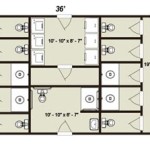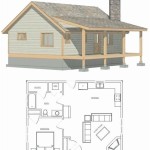Create House Floor Plans: A Comprehensive Guide
### Introduction: Designing a house floor plan is a crucial step in creating a functional, comfortable, and aesthetically pleasing living space. Whether you're building a new home or renovating an existing one, understanding the principles of floor plan design and following a systematic process can help you create a layout that meets your needs and preferences. This comprehensive guide will provide you with all the essential information and step-by-step instructions to create house floor plans like a pro. ### Step 1: Define Your Needs and Preferences: Before you start creating your floor plan, take some time to thoroughly think about your needs and preferences for your living space. Consider the following factors: - Number of bedrooms and bathrooms required - Type of living spaces desired, such as a formal dining room or a home office - Size and location of the kitchen, including appliances and storage requirements - Placement of windows and doors for natural light and ventilation - Circulation patterns and flow between rooms - Accessibility features, if necessary - Outdoor living spaces, like a patio or balcony ### Step 2: Research and Gather Information: Once you have a clear idea of your needs and preferences, it's time to gather information to help you create your floor plan. This includes: - Building codes and regulations in your area - Property survey and topographical information - Sun patterns and orientation of the lot - Budget and timeline for the project ### Step 3: Choose a Floor Plan Layout: There are various types of floor plan layouts to choose from, each with its own advantages and disadvantages. Some common layout options include: - Single-story layout: All rooms are on one level, suitable for smaller families and those who prefer easy accessibility. - Multi-story layout: Rooms are distributed over multiple levels, providing more privacy and separation of spaces. - Ranch-style layout: Typically a single-story layout with an open floor plan and a focus on outdoor living. - Split-level layout: Different sections of the house are connected by short flights of stairs, creating visual interest and separation of spaces. - Contemporary layout: Open floor plans, large windows, and a focus on natural light and indoor-outdoor flow. ### Step 4: Design the Room Layout: With your chosen floor plan layout, start designing the room layout by considering the following: - Position the bedrooms and bathrooms in a private area of the house, away from common areas. - Place the kitchen in a central location for easy access from other rooms. - Design the living room and dining room to be spacious and comfortable, with good traffic flow. - Consider the size and placement of closets, pantries, and storage spaces. - Create a mudroom or entryway to keep shoes, coats, and umbrellas organized. ### Step 5: Determine Room Sizes and Proportions: Allocate appropriate square footage for each room based on its intended purpose. Consider the following: - Minimum room sizes as per building codes and regulations. - Furniture arrangements and circulation paths within each room. - Balance and proportion of the overall floor plan layout. - Use graph paper or software to draw room layouts to scale. ### Step 6: Plan for Circulation and Flow: Ensure that there is a smooth and logical flow between rooms. Consider the following: - Create a central hallway or pathway that connects different areas of the house. - Position doorways and windows strategically to optimize natural light and ventilation. - Design wide enough hallways and doorways to accommodate comfortable movement. - Avoid creating bottlenecks or dead-end spaces. ### Step 7: Incorporate Special Features and Details: Add special features and details to enhance the functionality and aesthetics of your floor plan. This includes: - Incorporate built-in storage solutions, such as shelves, cabinets, and closets. - Design unique architectural features like bay windows, vaulted ceilings, or fireplaces. - Plan for specific features like laundry rooms, home offices, or entertainment spaces. - Consider incorporating energy-efficient elements like solar panels or skylights. ### Step 8: Review and Revise: Once you have a preliminary floor plan, take a step back and evaluate it critically. Consider the following: - Does the layout meet your needs and preferences? - Is the flow between rooms smooth and logical? - Are the room sizes and proportions balanced and proportional? - Are there any areas that can be improved for functionality or aesthetics? Make necessary revisions and adjustments to refine your floor plan. ### Step 9: Seek Professional Assistance: If you lack the expertise or confidence in creating a floor plan, consider seeking professional assistance from an architect or home designer. Professionals can provide valuable guidance, ensure compliance with building codes, and help you create a layout that meets your specific requirements. ### Conclusion: Creating house floor plans involves careful planning, attention to detail, and consideration of various factors. By following the steps outlined in this guide, you can design a floor plan that not only meets your needs but also enhances the overall functionality, comfort, and aesthetic appeal of your living space. Whether you choose to create the floor plan yourself or seek professional assistance, the process of designing a floor plan is an exciting opportunity to bring your dream home to life.
Floor Plan Creator And Designer Free Easy App

Floor Plans Types Symbols Examples

Create Floor Plans And Home Designs

20 Best Floor Plan To Create Your Plans Foyr

From Sketch To Reality How Design A House You Ll Love

Floor Plan Creator Planner 5d

Floor Plan Create 2d 3d Plans Autodesk

How Much Do 3d House Plans Cost Faqs Answered Cedreo

Free House Design Home And Plans

Floor Plan Creator Planner 5d








